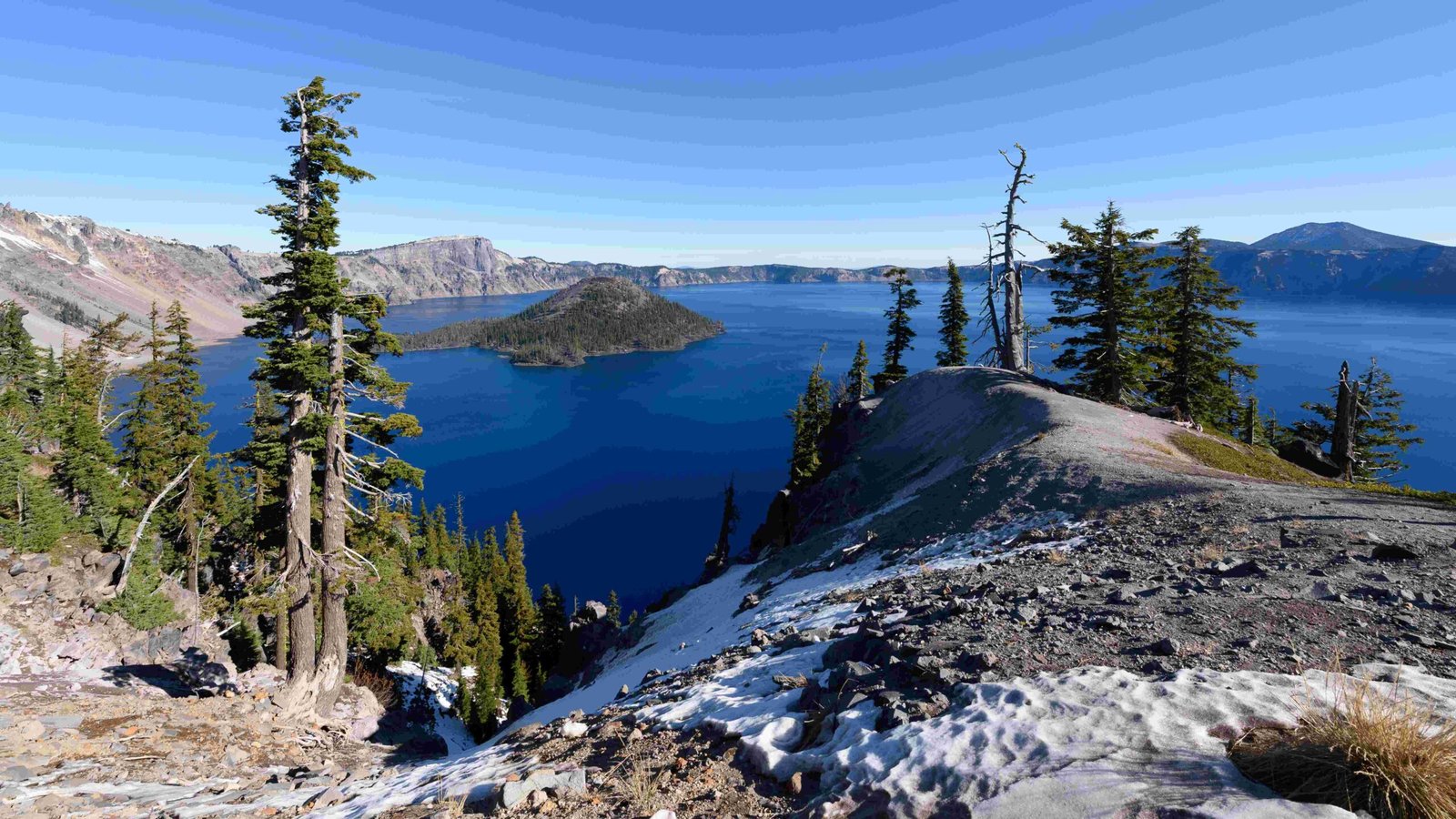Crater Lake, originally a fishless wonder, has undergone significant changes due to fish stocking practices. This article explores the history of fish introduction, its impact on the ecosystem, and current fishing regulations. From the first stocking in 1888 to the present-day naturally reproducing populations, Crater Lake’s aquatic life has evolved dramatically. We’ll delve into the specific species introduced, the reasons behind stocking cessation, and how these non-native fish have affected the lake’s delicate balance.
What Fish Species Were Introduced to Crater Lake?

The history of fish stocking in Crater Lake began in 1888 when William G. Steel first introduced fish to enhance the lake’s recreational value. Over the years, six species were introduced:
- Rainbow Trout (Oncorhynchus mykiss)
- Kokanee Salmon (Oncorhynchus nerka)
- Brown Trout
- Silver Salmon (initially misidentified)
- Chinook Salmon
- Brook Trout
However, only two species have survived and thrived in the lake:
- Kokanee Salmon: The most abundant species, with populations in the hundreds of thousands.
- Rainbow Trout: Less abundant but larger in size, with the largest recorded specimen measuring 26 inches and weighing 6.5 pounds.
When Did Fish Stocking in Crater Lake End?

The practice of stocking fish in Crater Lake ceased decades ago:
- Last recorded stocking of silver salmon: 1937
- Final stocking of rainbow trout: 1941
Since then, no further fish have been introduced to the lake. The existing populations have been naturally reproducing, maintaining their presence without human intervention.
What Are the Current Fishing Regulations at Crater Lake?
Fishing at Crater Lake is subject to specific regulations to ensure the preservation of the ecosystem:
- No fishing license required within Crater Lake National Park boundaries.
- All park waters are open to fishing unless otherwise indicated.
- No specific seasonal restrictions are in place.
- General fishing regulations apply to maintain sustainable practices.
- Access to some areas may be limited due to steep canyons and specific restrictions.
How Has Fish Stocking Impacted Crater Lake’s Ecosystem?
The introduction of non-native fish species has had several effects on Crater Lake’s ecosystem:
Biodiversity Changes
- Initial introduction of six non-native species
- Only two species (Kokanee Salmon and Rainbow Trout) have persisted
- Native Bull Trout (Salvelinus confluentus) are now rare and protected under the Endangered Species Act
Water Quality Effects
- Kokanee Salmon feed on zooplankton, influencing water quality and nutrient cycles
- Rainbow Trout consume aquatic insects, helping maintain ecosystem balance
Interactions with Native Species
- Minimal direct interaction between non-native fish and native Bull Trout due to habitat differences
- Conservation efforts are in place to protect the Bull Trout population
What Are the Costs Associated with Fishing at Crater Lake?
Fishing at Crater Lake is remarkably accessible from a cost perspective:
- No fishing license required within park boundaries
- No specific fees or permits needed for fishing in the park
- Anglers must adhere to general fishing regulations
This lack of licensing requirements makes Crater Lake an attractive destination for fishing enthusiasts.
How Do Crater Lake’s Fish Populations Compare to Other Lakes?
To understand how Crater Lake’s fish populations compare to other lakes, let’s look at a comparative table:
| Lake | Dominant Fish Species | Population Density | Stocking Status |
|---|---|---|---|
| Crater Lake | Kokanee Salmon, Rainbow Trout | Moderate | No current stocking |
| Lake Tahoe | Lake Trout, Kokanee Salmon | High | Regularly stocked |
| Yellowstone Lake | Cutthroat Trout, Lake Trout | Varying (native species declining) | Native species restoration efforts |
| Lake Superior | Lake Trout, Whitefish | High | Some species stocked |
This comparison highlights the unique nature of Crater Lake’s fish population, which maintains itself without ongoing stocking efforts.
What Future Challenges Face Crater Lake’s Fish Population?
Looking ahead, several challenges may impact the fish populations in Crater Lake:
- Climate Change: Warming waters could affect fish habitat and food sources.
- Invasive Species: Potential introduction of new invasive species could disrupt the current balance.
- Water Quality: Changes in water quality due to external factors could impact fish health.
- Visitor Impact: Increased tourism and fishing pressure may affect fish populations.
- Conservation Efforts: Balancing the protection of native species with the management of introduced species.
Conclusion
The history of fish stocking in Crater Lake offers a fascinating glimpse into human intervention in natural ecosystems. From the initial introduction of multiple species to the current self-sustaining populations of Kokanee Salmon and Rainbow Trout, the lake’s aquatic life has undergone significant changes. While fishing remains a popular activity, it’s crucial to balance recreational use with conservation efforts to preserve this unique ecosystem for future generations.
As we continue to study and monitor the fish populations in Crater Lake, we gain valuable insights into the long-term effects of species introduction and the resilience of aquatic ecosystems. The story of Crater Lake’s fish serves as an important lesson in environmental management and the complex interplay between human activities and natural systems.
